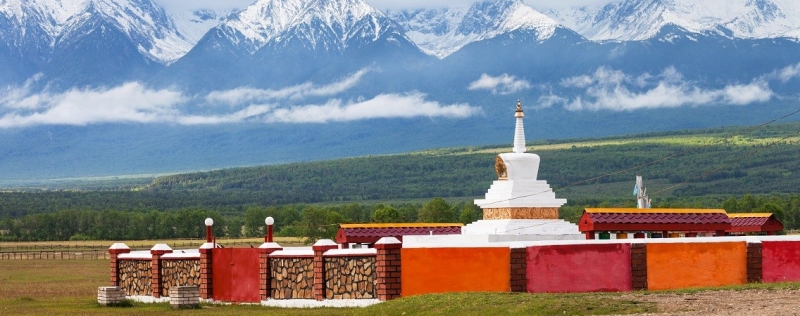
Many people associate the Republic of Buryatia exclusively with Lake Baikal and hearty buuz, but the region is also one of the largest centers of Buddhism in Russia. This religion spread in Buryatia a long time ago: first, yurts for prayers began to be built here, and later – full-fledged monasteries, relics of which can still be seen today. Therefore, do not rush to immediately leave Ulan-Ude for Lake Baikal or neighboring Mongolia – before you is a very vibrant culture, which has not yet been reached by mass tourism. We have compiled a guide to the region for the first acquaintance with Buddhism in Buryatia.
How to get there:
By plane to Ulan-Ude, round trip ticket prices start from 10,000 rubles*.
Where to stay:
The journey to Buryatia will one way or another begin from its capital, Ulan-Ude. We selected several hotels in the city:
Wellhome – from 900 rubles per day* for an individual capsule in a common room with two or three separate bathrooms.
“Greenwich” – from 2,600 rubles per night* in a standard room.
Hotel Altan – from 3,000 rubles per night* for a standard room.
“Baikal Plaza” – from 3,500 rubles per day* for an economy class room.
Hunnu Hotel — from 3,700 rubles per night* in a superior room.
Where to start
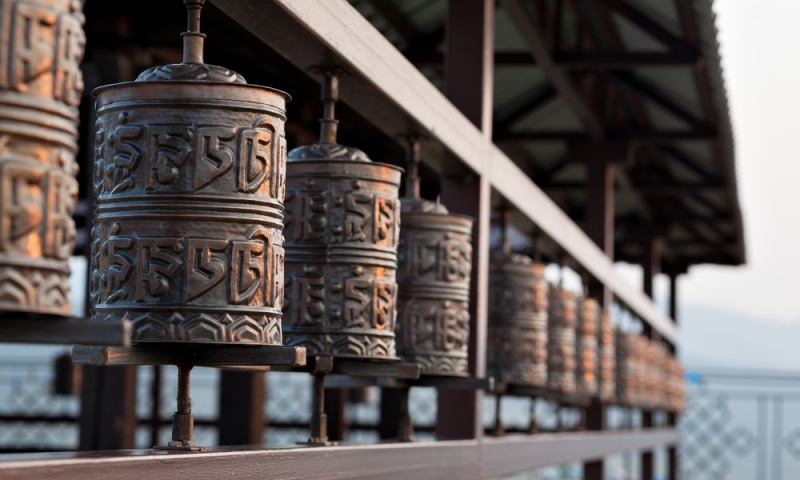
If you don’t know anything about Buddhism, first of all we recommend going to the Museum of Buryatia. Here you can see real treasures of Buddhist culture and art, and some exhibits have never left the region. Among them, for example, is a sculptural group of Buddhas taken from one of the central Buddhist monastery complexes that suffered from repression Buryatia in the 1950s. The museum also displays works of Buddhist painters and sculptors, as well as decorative elements of datsans. Pay attention to relics brought from neighboring regions: Trans-Baikal Territory, Irkutsk Region and the Republic of Tyva. The vast Buddhist culture that has dominated these places for a long time will open before you.
Interesting fact:Since many monasteries in the region are inaccessible due to the lack of roads, Buddhist pilgrims can be found right at the exhibition, meditating near one or another sculpture.
Ivolginsky datsan
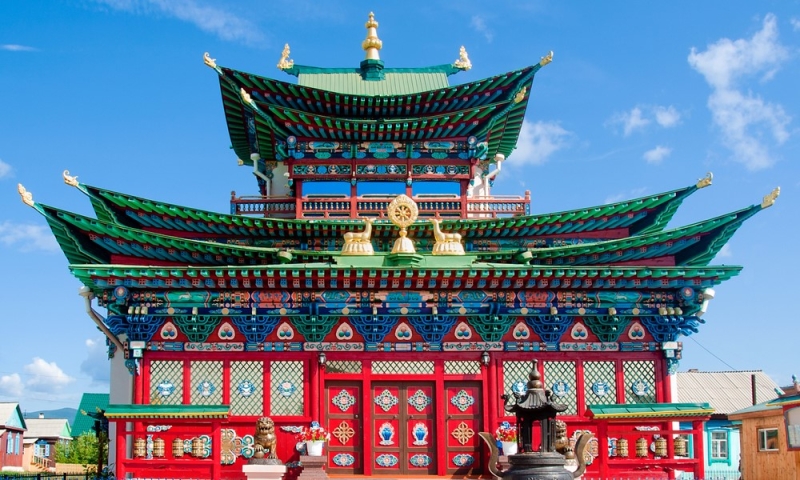
The main Buddhist complex of modern Russia is considered to be Ivolginsky datsan, which was founded in 1945. Now this place has the status of the residence of the head of Buddhists in Russia, XXIV Pandito Khambo Lama Damba Ayusheev. It’s very impressive here: lamps and incense are burning, updated prayer wheels are spinning, and the voices of monks are heard from the temples. The temples and the palace with the incorrupt body of the saint are kept in perfect order with love and warmth. It is especially good here in sunny weather. It’s worth starting your acquaintance with the indescribable spirit of Buddhism in Buryatia from this beautiful datsan.
How to get there:The datsan is located in the village of Verkhnyaya Ivolga, 36 km from the capital of Buryatia. From Ulan-Ude you can get to it by taxi or public transport. Take buses No. 104 or No. 130 and go to the final stop, where you change to a minibus directly to the Ivolginsky Datsan. The journey will take about an hour and a half.
Ancient Buddhist monasteries
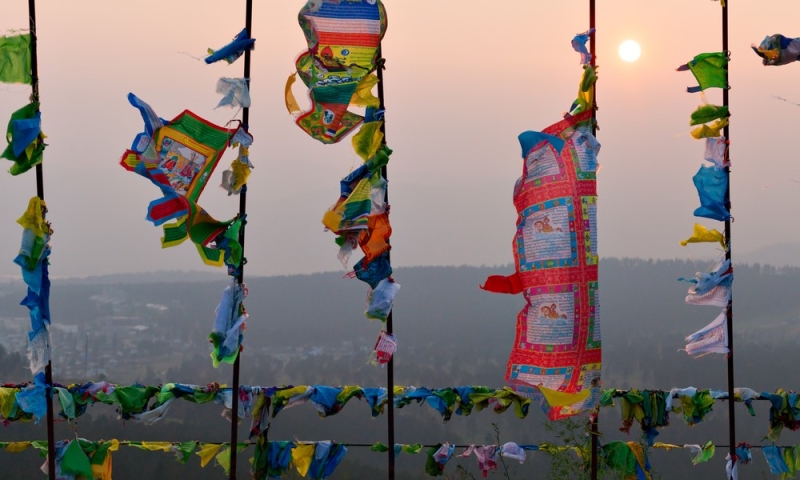
We recommend not limiting yourself to the Ivolginsky datsan and going to the steppes to see ancient authentic monasteries, which not every traveler gets to.
Aninsky datsan is one of the most ancient stone Buddhist monasteries in the region. In the ruins of its construction, dating back to 1811, the combination of Russian Orthodox architecture with the temple architecture of China during the Qing Dynasty is still visible. Perhaps the tradition of building stone Buddhist monasteries in Russia came from the Aninsky datsan – the ruins of the first temple are still located here. Now along the perimeter of the huge territory there are 108 suburgans (reliquaries sacred to Buddhists in the form of “turrets”), and there are two temples inside the complex.
Interesting fact:In the churches there is a pronounced emphasis on the veneration of Russian emperors. For example, it’s not for nothing that in one of them you will see a bust of Catherine II. Buryats of the 18th century recognized her as the incarnation of White Tara, one of the central figures of Tibetan Buddhism. This tradition continued until President Dmitry Medvedev was recognized as the embodiment of White Tara.
In 1825, Egituisky datsan separated from the huge Aninsky datsan, which was comparable in size to a separate settlement. Here in one of the temples there is a two-meter tall Buddha statue made of sandalwood. This world relic was kept for a long time in the funds of the future Museum of Buryatia. You can talk for a long time about how this religious shrine was taken to Russia from China 100 years ago, or you can come and be surprised at its preservation: it is believed that the statue was created during the life of Buddha Shakyamuni, that is, in the middle of the first millennium BC.
How to get there:datsans are located in rural areas, the most convenient way to get there is by car. If you plan to use public transport, take a bus to the village of Khorinsk – there at the bus station you can negotiate with the drivers about a trip to the datsans.
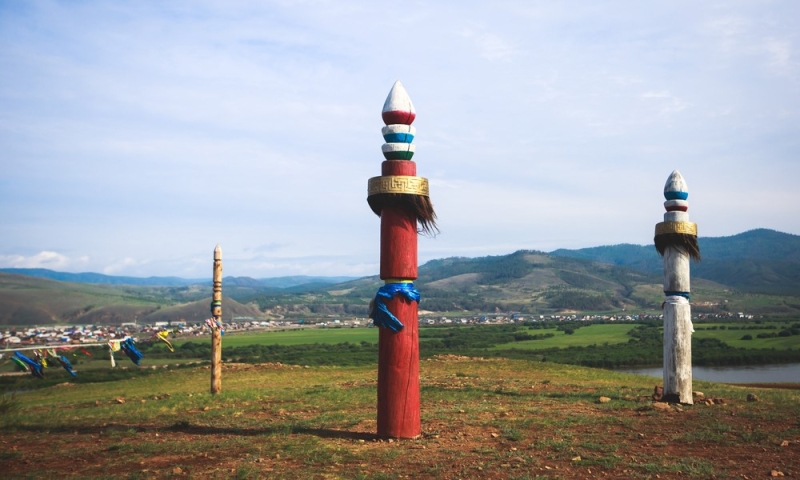
Another destination for cultural tourism and getting to know local Buddhism is the south of the Republic of Buryatia. Here are the main and oldest stone datsans of the 18th century: Tsongolsky (Murochinsky) and Gusinoozersky.
Tsongol datsan– the first official datsan of Russia. It was built in the 1730s, and its abbot was the First Pandito Khambo Lama Damba-Dorzho Zayaev, whose name is associated with the consolidation of Buddhism in Russia as an official religion. Due to the fact that the Tsongol datsan was moved more than once, this border land itself near the Chikoy River is considered sacred. Now the datsan, destroyed to the ground in the 1930s, is located on a hill near the village of Murochi, Kyakhtinsky district. From there you can see the blue mountains of Mongolia, one and a half kilometers away is a self-manifested inscription on a rock with the mantra of compassion of Tibetan Buddhism, and not far away is the rather extensive sandy Aman Khan desert.
Closer to Ulan-Ude is located Gusinoozersky datsan, which also appeared at the direction of the first Pandito Khambo Lama in the 18th century. A huge Buddhist complex, which included 17 temples, at the beginning of the 19th century actually became one of the two centers of East Siberian Buddhism. Datsan had its own printing house, and the dance mystery Tsam was held in the courtyard.
How to get there: If you don’t go as part of a pilgrimage tour, the road will be quite difficult. Having your own car or being able to pay for a taxi will help.
General advice:
- If you want to attend the service, it is better to arrive around 10 am local time.
- When visiting the border area, Russians who are not registered in the Republic of Buryatia must obtain permission to visit the specified territory from the local FSB. The application is reviewed within 15 working days and issued in Ulan-Ude.
- The air temperature of the city and the steppe can differ greatly, so it is better to take warm clothes with you.
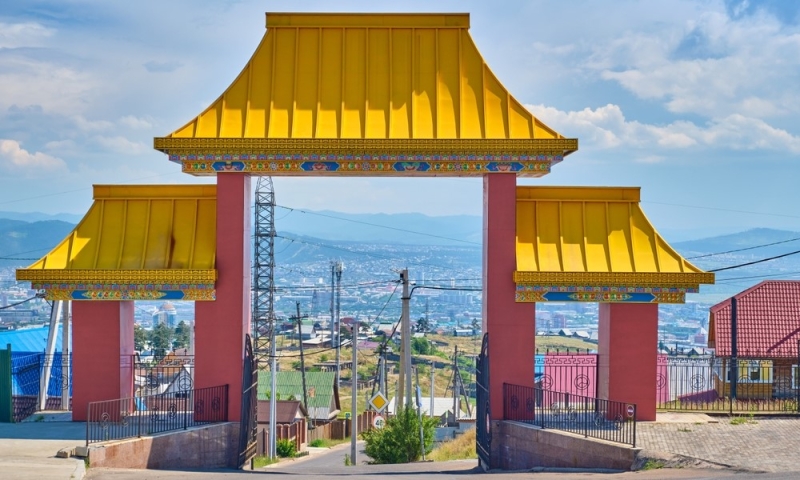
After the rise of the Ivolginsky datsan as a new center of Russian Buddhism, none of the indicated Buddhist complexes no longer has the same popularity as in the 19th century. However, visiting them is necessary if you want to feel the real spirit of Buddhism.
You can finish your acquaintance with the Buryat center by returning to Ulan-Ude. Here on Bald Mountain is the Rinpoche Bagsha Center, created with the blessing of the now living Dalai Lama XIV. This consecrated and richly decorated place opens up a very beautiful observation deck over the entire capital of Buryatia.
How to get there: you can get to “Rinpoche Bagsha” by intercity minibus No. 97 in 40 minutes.
*Prices are current at the time of publication.

